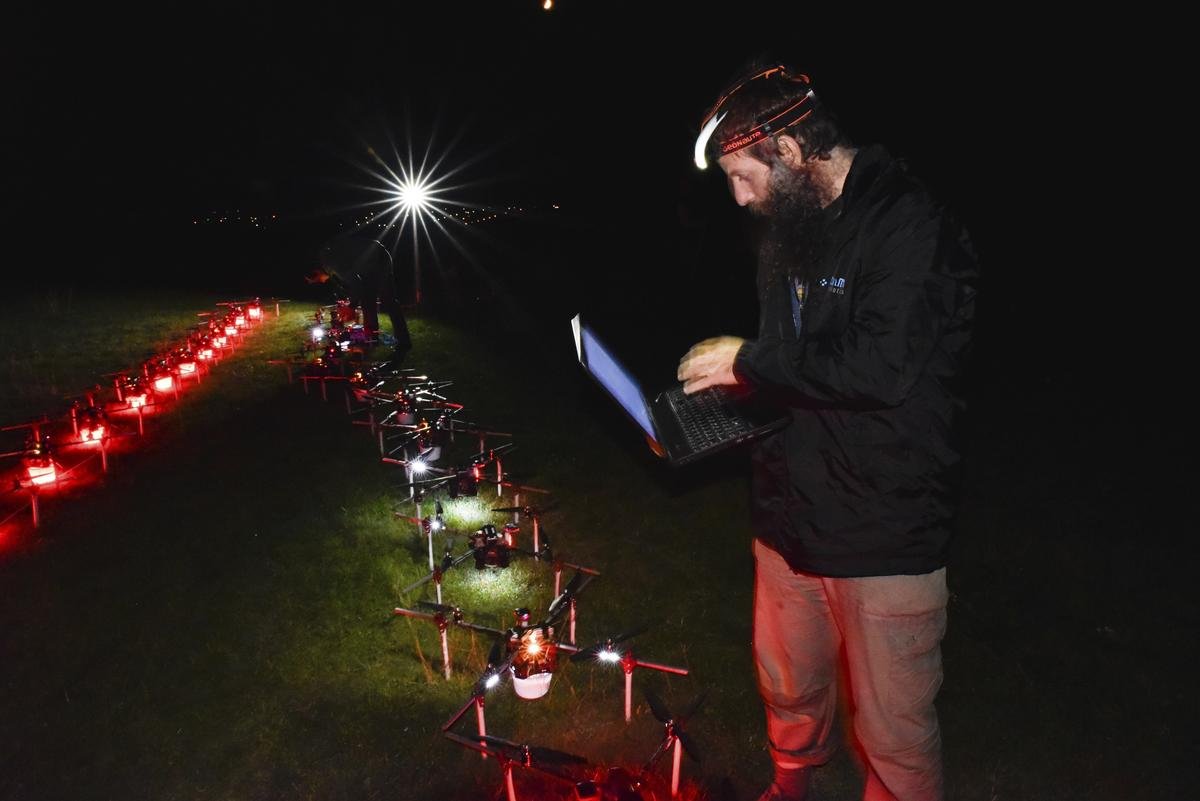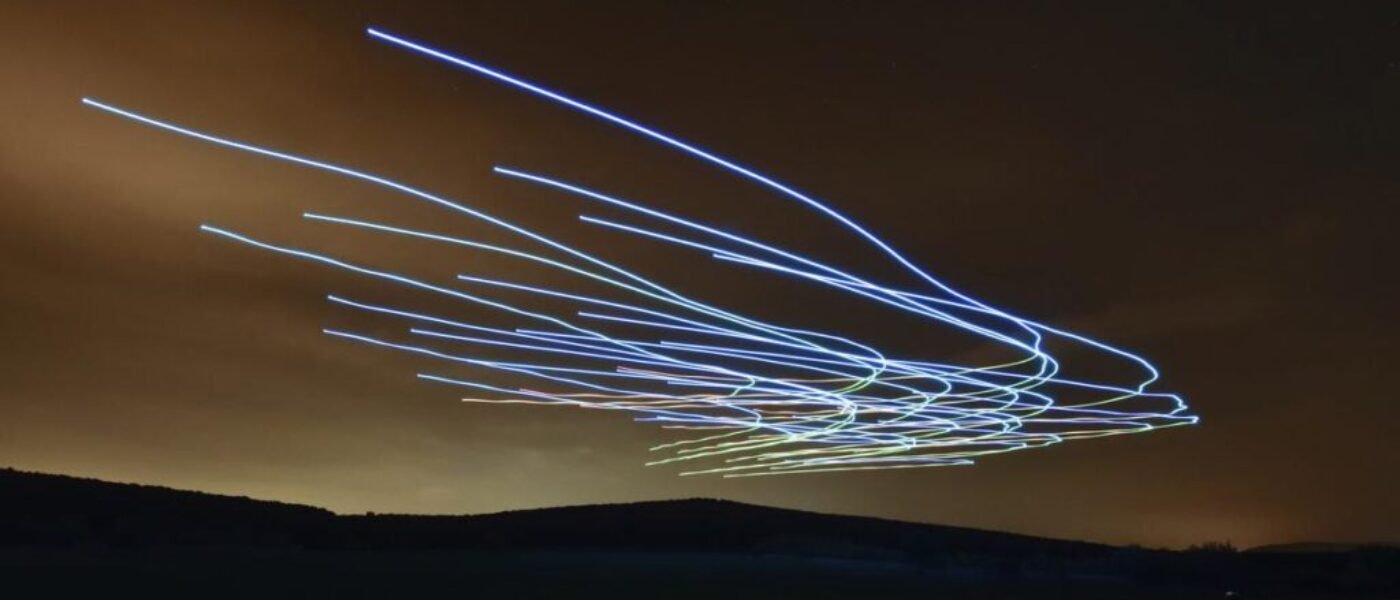Introduction
Imagine watching a graceful flock of birds swaying through the sky or a troop of ants marching with military precision. These incredible displays of natural coordination are now inspiring innovations in technology. Hungarian researchers have taken cues from animal movement data to build drone swarms. By studying the way animals communicate and move collectively, scientists are developing drones that mimic these behaviors, working together seamlessly in complex environments. This advancement promises to change the future of drone technology and expand their applications in exciting ways.
Understanding Animal Movement Data

The Significance of Studying Animal Behaviors
Have you ever watched a flock of birds take flight as if they were a single entity or a school of fish swimming in perfect harmony? It’s enchanting, to say the least. But beyond the beauty, there’s a treasure trove of scientific data! Studying animal behaviors offers insights into how these creatures communicate and move as a group. This research isn’t just about understanding the animal kingdom; it’s also about mimicking these natural patterns to solve modern-day challenges. For instance, by learning how animals conserve energy through collective motion, we can pave the way for innovations in technology, particularly in the development of efficient and coordinated systems.
Technologies Used to Gather and Analyze Movement Data
To unravel the secrets behind animals’ fascinating movement patterns, researchers rely on an array of cutting-edge technologies. GPS tags and radio transmitters are commonly used to track individual animals over long distances, while accelerometers can measure their speed and direction.
– GIS (Geographic Information Systems): This technology helps map out the movements in relation to the animal’s environment, offering insights into how terrain and obstacles affect their paths.
– Machine Learning: By analyzing vast amounts of movement data, algorithms can identify and predict patterns that might be too complex for humans to discern manually.
The integration of these technologies allows scientists to create complex models of animal movements, offering a detailed view of how animals coordinate and travel as a group.
Insights Gained from Flocking Birds and Schooling Fish
What can we learn from birds fluttering in the sky or fish zooming through water in intricate formations? Plenty! From birds, researchers have discovered the principles of flight efficiency and collision avoidance. Birds often change position within a flock to share the energetic cost of leading, much like marathon runners drafting off one another.
Schooling fish, on the other hand, have taught scientists about fluid dynamics and optimal spacing. Fish maintain an almost instinctual distance from each other, which prevents collisions and allows for quick directional changes without chaos. These behaviors are critical for survival, as they help avoid predators and improve foraging efficiency.
Innovations in Drone Technology
Overview of Autonomous Drone Swarms
Imagine a fleet of drones that can work together seamlessly without human intervention––this isn’t science fiction; it’s what autonomous drone swarms are all about! Inspired by the complex behaviors seen in animal groups, these swarms consist of dozens, or even hundreds, of drones that communicate in real-time to accomplish tasks. Unlike traditional drones, which often require individual piloting, autonomous drone swarms use artificial intelligence to coordinate and complete missions far more efficiently.
Key Features and Functions of the Swarm Drones
Swarm drones are revolutionizing the world of aerial technology, packed with incredible features and functions. Here are some of the key attributes that make them so impressive:
– Self-Healing Networks: When one drone fails or is incapacitated, others in the swarm compensate instantly to continue the mission.
– Dynamic Coordination: These drones can change formations spontaneously, much like a flock of birds, adapting to new variables in the environment.
– Scalability: Whether a task requires a few drones or hundreds, swarm technology easily scales to accommodate the challenge.
These features ensure that the drones can carry out complex missions without faltering, even under challenging conditions.
Advantages of Using Swarm Technology in Drones
Why go through all the trouble of creating a swarm of drones? The benefits are substantial and diverse. For one, swarm drones excel in efficiency. By collectively coordinating, they cover more ground and complete tasks in a fraction of the time it would take a single drone. They are also incredibly reliable. Should one drone encounter a problem, the holistic group is largely unaffected and continues to function seamlessly.
Furthermore, swarm drones offer heightened versatility. They can be deployed for anything from agricultural monitoring—scanning vast fields with precision—to search and rescue missions, where complex terrains are better cruised by multiple drones working together. The potential applications seem limitless, opening doors to possibilities once constrained by technological barriers.
Inspiring current drone technology, like these swarm systems, is just one example of how the lessons learned from nature are being applied to innovate and improve human-made systems. By understanding and harnessing the wisdom behind animal movement patterns, Hungarian researchers are charting a new course for technological advancement. The future of drones, thanks in no small part to our feathery and finned friends, looks promisingly efficient, adaptable, and autonomous.
Hungarian Researchers’ Approach
The buzz around drone technology has been around for quite some time. Still, what sets Hungarian researchers apart is their innovative approach to using animal movement data to design autonomous drone swarms. By observing and analyzing the movement of birds and insects, these researchers have been able to gain remarkable insights that are now guiding their work in drone technology.
Research Methodology and Design
The researchers embarked on a fascinating journey, beginning with the behavioral analysis of various animal groups. They studied birds, such as starlings, and insects like bees, both known for their exceptional ability to move synchronously in large numbers. Using a combination of field observations, sophisticated computer simulations, and data analytics, the researchers were able to decode patterns that occur within these animal swarms.
To apply these insights to drone swarms, they adopted a multi-disciplinary approach, incorporating fields like computer science, biology, and engineering. The focus was on designing algorithms that could mimic these natural movement patterns. By doing so, the drones were equipped to operate autonomously in a coordinated fashion, much like a flock of birds swiftly changing direction or a swarm of bees buzzing seamlessly through the sky.
Challenges and Solutions in the Development Process
Naturally, the development of autonomous drone swarms didn’t come without its hurdles. A significant challenge was achieving smooth communication among the drones. Just like animals in the wild rely on subtler signals and instincts, the drones required a robust system to communicate effectively without human intervention.
To overcome this, the researchers worked extensively on improving the communication firmware and ensuring it could operate efficiently despite challenges like signal interference, physical obstacles, and varying weather conditions. They also developed fail-safes that allowed the drones to make real-time decisions individually if communication with other drones was temporarily lost.
Another challenge was ensuring the drones could adapt to dynamic environments much like their animal counterparts do. To address this, machine learning played a crucial role. The drones were trained with multiple simulation scenarios, enabling them to recognize and adapt to unexpected obstacles and changes swiftly.
Case Studies and Successful Implementations
This innovative approach didn’t just remain a theoretical success. Hungarian researchers have successfully put their work to the test through various case studies. In one instance, a swarm of drones was deployed to map expansive areas affected by wildfires. The autonomous nature of the drones meant they could cover a larger area without the need for human pilots, providing vital real-time information for firefighting teams.
In another implementation, drone swarms were used in a natural reserve to monitor wildlife populations. The drones were able to traverse the terrains quietly and efficiently, collecting data with minimal disturbance to the animals.
Applications of Autonomous Drone Swarms
 Image courtesy: Unsplash
Image courtesy: Unsplash
The potential applications of autonomous drone swarms are vast and exciting. The technology is already making waves in various sectors, showing promising results and endless possibilities for the future.
Agricultural Uses and Benefits
In agriculture, drone swarms are an absolute game-changer. Imagine having a fleet of drones monitor the health of crops, detect pest infestations early, and ensure optimal conditions for growth. These drones can survey large fields quickly, providing farmers with accurate and timely information to improve yields and reduce waste.
The benefits don’t stop there; drone swarms can also assist in planting seeds and spraying fertilizers or pesticides with precision. This not only cuts costs but also reduces the environmental footprint of farming practices by minimizing chemical usage.
Disaster Relief and Emergency Response
In times of crisis, time is of the essence, and this is where autonomous drone swarms truly shine. During disasters like earthquakes or floods, they can be deployed rapidly to assess the situation, locate survivors, and deliver crucial supplies, all without putting even more lives at risk.
Their ability to navigate through challenging environments and provide a bird’s-eye view makes them invaluable in coordinating rescue efforts, ensuring help reaches those in need faster. Moreover, their continuous operation allows for constant real-time updates on changing conditions, aiding decision-makers in strategizing effectively in high-pressure scenarios.
Potential Future Applications and Developments
As the technology continues to evolve, the future for autonomous drone swarms looks incredibly bright. We can anticipate their roles expanding into urban areas, where they might assist in traffic management or even deliver packages efficiently through busy cityscapes.
In conservation, they hold the promise of protecting endangered species by monitoring habitats and detecting threats early. Even in the realm of entertainment, one can envision drone swarms creating mesmerizing light shows synonymous with large-scale events.
With advancements in AI and machine learning, these drones will become smarter, more efficient, and capable of taking on increasingly complex tasks. So, while we’ve already witnessed some remarkable applications, the best is yet to come as Hungarian researchers continue to push the boundaries of what’s possible with this groundbreaking technology.
Conclusion
The fusion of animal movement data with drone technology is truly a groundbreaking approach. Hungarian researchers have opened up new possibilities by studying how animals move and applying these insights to develop autonomous drone swarms. These drones can navigate complex environments with impressive coordination, much like flocks of birds or schools of fish.
– Innovative Applications: The potential uses for these drones are vast, ranging from search and rescue missions to agriculture and environmental monitoring.
– Further Research: Continued research can refine these systems, making them even more efficient and intelligent.
Ultimately, understanding nature may hold the key to enhancing our technology. It’s an exciting journey where science and nature dance together, shaping a future of harmonious innovation. So, next time you see a flock of birds, remember—they might just be teaching us how to fly higher!
